The Perosio and the Russian nobility
Nikolay Paolovich Perosio and María Zataevich`s daughters, Olga Nikolaevna Perosio (1856-1937), were the Russian Prince`s mother-in-law.
Olga , was born in Genova, in a parents vacation trip.
Married with Michail Stukovenko in Saint Petersburg, she had a daughter named Elizabeta Michajlovna Stukovenko (1876-1955).
Elizabeta get married in the first nuptials in Saint Petersburg with Evgenij Petrovich Karcev (1861-1917).
Together whith their mother and uncle Ivan Nicolayevich Perosio (1860-1927), leave to Capri.
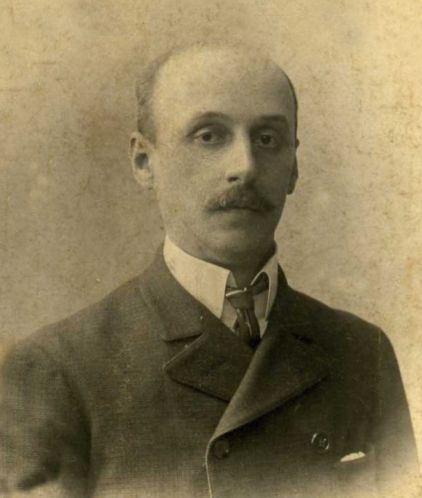
Ivan Nicolayevich Perosio
Then Elizabeta get married for the second time with Prince Nikolaj Nikolaevich Sayn-Wittgenstein (1862-1934) 17-11-1927 by civil, then in Naples the 20-11-1927 by church.
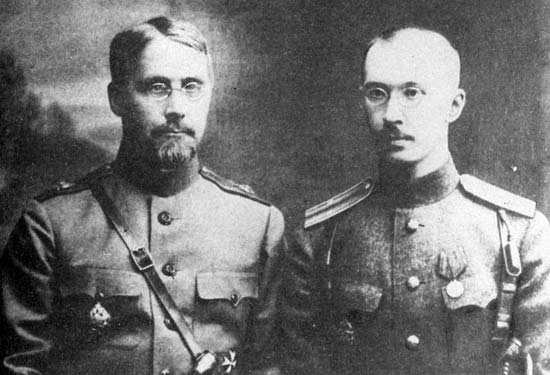
Nikolaj Nikolaevich Sayn-Wittgenstein and his son Boris in 1916
Her husband was a Imperial Cort Russian member and He had been also trader near by Kiev. Escaped the Bolshevik revolution , emigrated to Capri where he knows Elizabeta.
His grandfather, count Ludwig Adolf Peter Sayn Wittgenstein, was "Head of the Allied Navy" that overcome the Napoleón`s fleet in Polotsk in 1812.
Thanks to their victory he was called with the nickname "Savior of Saint Petersburg" and named prince in 1834 for the Prussia`s king, with the Czar's approval.
The marriage had a trade for sale of Russian clothes and antiques in Villa Regina.
There die and their remains on the Capri´s non Catholic cemetery.

Capri´s island.
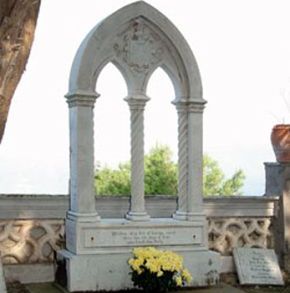
Capri´s non Catholic cemetery .
History of the House of Sayn
The elder Counts of Sayn
In the 10th century a first unconfirmed naming of the Counts of Sayn can be found. Assumedly they were minor Counts to the Pfaltzgraves (Counts Palatine) in the Auelgau. The naming of the brothers Count Eberhard and Count Heinrich of Sayn back in 1139 is the first confirmed naming of ancestors of the Princess of Sayn-Wittgenstein.
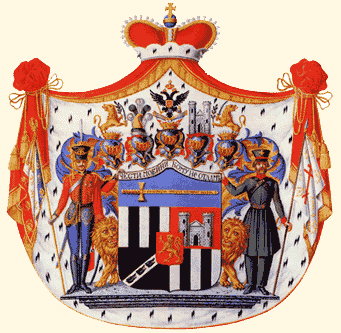
Coat of Arms of the Counts of Sayn-Wittgenstein-Sayn
Shortly after they widen their sphere of influence from the Mittelrhein (Koblenz / Westerwald area) to the regions around Bonn and Cologne. The biggest increment of the county comes early in the 13th century when Count Heinrich III., the Great, marries Mechtild of Meissen-Landsberg, who brings territories on the Rhine from the landgravian-Thuringian holdings of her mother into the mariage. 1205 Bruno of Sayn becomes Archbishop of Cologne.
The Counts of Sayn from the House of Sponheim
The county was inherited, on the childless death of Heinrich III., in 1247, by his sister Adelheid, married to Count Gottfried III. of Sponheim, a descendant of Count Stephan of Sponheim, first mentioned in 1052.
In 1294 the new counts of Sayn from the House of Sponheim split the county amongst the brothers Johann, who receives Sayn, and Engelbert, who inherits Marienburg Castle in Vallendar. The older line reigns in Sayn, Hachenburg and Altenkirchen until in 1606 when Count Heinrich IV. of Sayn-Sayn as the last male descendant dies.
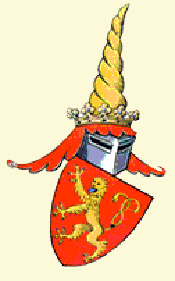
Coat of arms of the Counts of Sayn-Sayn
The Counts of Sayn and Wittgenstein
Salentin of Sayn-Vallendar from the younger line marries in 1345 Adelheid, the heiress of the Wittgenstein County.
Their descendants, the Counts of Sayn and Wittgenstein split the territory in 1605 amongst the sons of Ludwig the Elder into the Berleburg County (since 1792 Princes zu Sayn-Wittgenstein-Berleburg), the Sayn County (Counts zu Sayn-Wittgenstein-Sayn, extinct in 1846) and the Wittgenstein County (since 1801 Princes zu Sayn-Wittgenstein-Hohenstein).
The Princes zu Sayn-Wittgenstein-Sayn
Count Christian from the Ludwigsburg side-line of the Sayn-Wittgenstein-Berleburg line joins the Russian military service in the mid 18th century.
His son Count Ludwig Adolph Peter, or Prince Peter Khristianovich Wittgenstein,the later imperial Russian field-marshal, is celebrated as the saviour of St. Petersburg, due to his military achievements and victories during the liberation war of 1812-1813 against Napoleon. In 1834 he is awarded the title of Prince of (Fürst von) Sayn-Wittgenstein-Berleburg-Ludwigsburg by the King of Prussia with acknowledgement of the Russian Tsar .
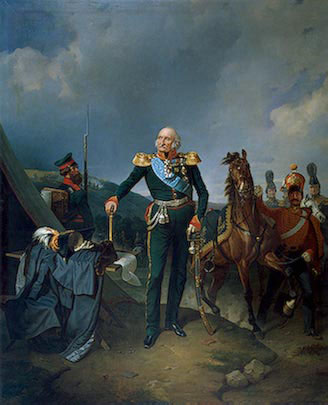
Field-Marshal Prince Peter Sayn-Wittgenstein
Ludwig Adolf Peter of Sayn-Wittgenstein-Ludwigsburg, he was descended from a family of independent counts whose seat was in Berleburg (present day North Rhine-Westphalia, Germany). His parents were Count Christian Louis Casimir of Sayn-Wittgenstein-Ludwigsburg and his first wife Countess Amalie Ludowika Finck von Finckenstein.
In 1805, he fought at Austerlitz, in 1806 against the Turks and in 1807 against Napoleon at Friedland and against the Swedes in Finland.
In the war of 1812 he commanded the right wing army of the Russians which he commanded in the First and Second battle of Polotsk. In the campaign of 1813 in January he took over the command of the Russian army after Kutuzov's death and commanded the Russian army at Lützen and Bautzen. But after the defeats of the Spring campaign he laid down this command and led an army corps during the Dresden and Leipzig campaigns, and at Bar-sur-Aube in the 1814 campaign he was severely wounded.
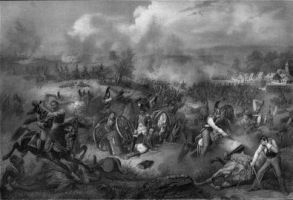
The first batle of Polotsk August 17-18, 1812.
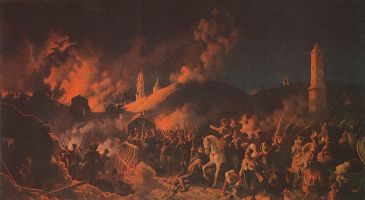
Second Batle october 18-20,1812. By Piter von Hess.
In 1823 he was promoted Field Marshal, and in 1828 he was appointed to command the Russian army in the war against Turkey. But ill health soon obliged him to retire. In 1834 the king of Prussia gave him the title of Fürst (Prince) zu Sayn-Wittgenstein.
On 27 June 1798 he married Countess Antonia Cäcilie Snarska and had in this marriage 11 children.
He died on the 11th of June 1843 in Lemberg (Lviv), where he looked after estates of his son Lev Petrovich.
Bibliography and sources
Anagrafe di CapriHistoria de la Rusia- Jean Marie Chopin -Colaborador Editores del Guardia Nacional, Imprenta del Guardia Nacional
Publicado por Imprenta del Guardia Nacional, 1839
Procedente de Biblioteca de Catalunya
Digitalizado el 4 Sep 2008
406 páginas Who's who in Military History: From 1453 to the Present Day
Escrito por John Keegan, Andrew Wheatcroft
Colaborador Andrew Wheatcroft
Edition: 2, illustrated
Publicado por Routledge, 1996 The Encyclopedia Britannica: A Dictionary of Arts, Sciences, Literature and General Information
Escrito por Hugh Chisholm
Edition: 11
Publicado por The Encyclopedia Britannica Co., 1910
Pag 764 The Encyclopedia of Nineteenth-century Land Warfare: An Illustrated World View
Escrito por Byron Farwell
Edition: illustrated
Publicado por W.W. Norton, 2001
900 páginas The Russian Army of the Napoleonic Wars: Infantry 1799-1814
Escrito por Philip J. Haythornthwaite, Paul Hannon, Bryan Fosten
Ilustrado por Paul Hannon
Colaborador Paul Hannon, Bryan Fosten
Edition: illustrated, reprint
Publicado por Osprey Publishing, 1987 Bibl. Gothaisches Genealogisches Taschenbuch der Fürstlichen
Häuser, 1941, n. 178, p. 593; D. RICHTER, op. cit., p. 155; Dvorjanskij
kalendar’. Tetrad’ n. 6. SPb., VIRD, 1999, pp. 74-75. Bibl. D. RICHTER, op. cit., p. 159. Olga Perosio Bibl. J. MONEY, op. cit., p. 180; D. RICHTER, op. cit., p. 165. Elizabeta FORESTIERI DELL’EST A CAPRI. TESTIMONIANZE
MALINCONICHE- Mi ch a i l T a l a l a y John Burkardt y Ulf Lückel, La Casa de Sayn-Wittgenstein-Berleburg, Werl ² 2005
Developed by